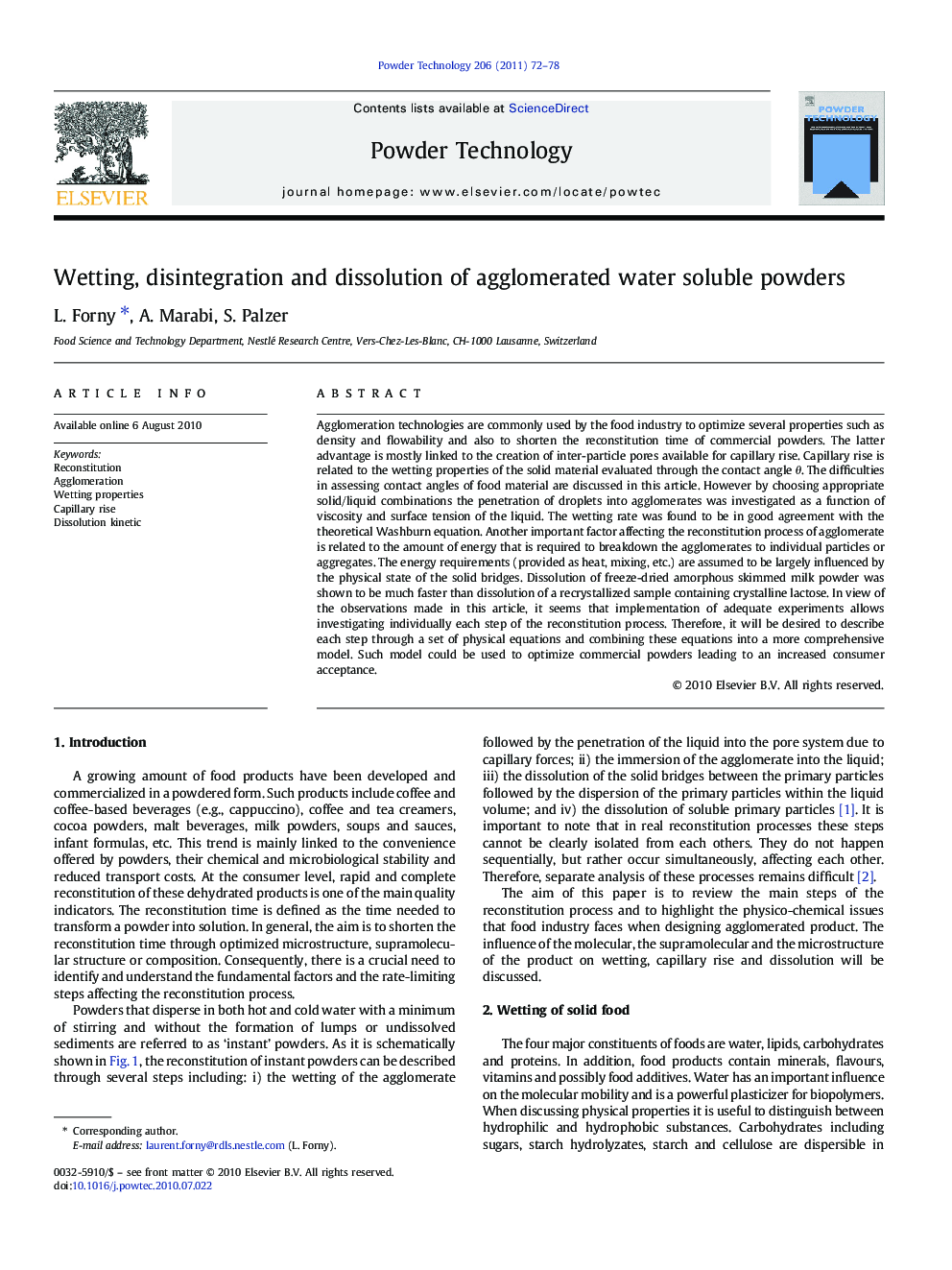| Article ID | Journal | Published Year | Pages | File Type |
|---|---|---|---|---|
| 238079 | Powder Technology | 2011 | 7 Pages |
Agglomeration technologies are commonly used by the food industry to optimize several properties such as density and flowability and also to shorten the reconstitution time of commercial powders. The latter advantage is mostly linked to the creation of inter-particle pores available for capillary rise. Capillary rise is related to the wetting properties of the solid material evaluated through the contact angle θ. The difficulties in assessing contact angles of food material are discussed in this article. However by choosing appropriate solid/liquid combinations the penetration of droplets into agglomerates was investigated as a function of viscosity and surface tension of the liquid. The wetting rate was found to be in good agreement with the theoretical Washburn equation. Another important factor affecting the reconstitution process of agglomerate is related to the amount of energy that is required to breakdown the agglomerates to individual particles or aggregates. The energy requirements (provided as heat, mixing, etc.) are assumed to be largely influenced by the physical state of the solid bridges. Dissolution of freeze-dried amorphous skimmed milk powder was shown to be much faster than dissolution of a recrystallized sample containing crystalline lactose. In view of the observations made in this article, it seems that implementation of adequate experiments allows investigating individually each step of the reconstitution process. Therefore, it will be desired to describe each step through a set of physical equations and combining these equations into a more comprehensive model. Such model could be used to optimize commercial powders leading to an increased consumer acceptance.
Graphical AbstractReconstitution, defined as the process of transforming a powder into a solution, is considered to be composed of several steps including the wetting, sinking, disintegration and dissolution of the agglomerate. As discussed in this paper, a better comprehension of each of this step should lead to optimized reconstitution properties.Figure optionsDownload full-size imageDownload as PowerPoint slide
